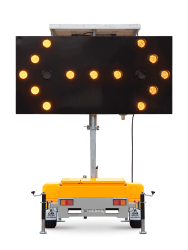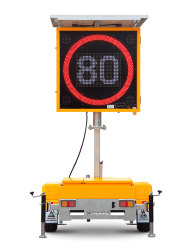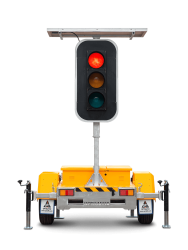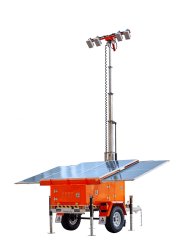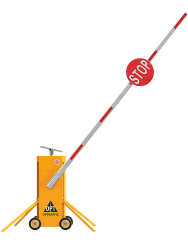-1024x768.jpg)
What Are VSLS (Variable Speed Limit Signs)
VSLS (Variable Speed Limit Signs) are traffic control devices that display speed limit information to the driver on an LED screen, usually in two types: fixed and mobile. Unlike traditional static speed limit signs, VSLS are flexible and intelligent, and the speed information can be changed in real time based on current road conditions, traffic flow, weather conditions, or other factors.
In recent years, whether in New South Wales and Queensland in Australia, or in California and Maine in the United States, whether driving on highways, quiet residential streets, or congested roads, you can often see VSLS. The widespread application of VSLS is due to their significant role in temporary situations, for example, while 80 kilometers per hour might be appropriate on a dry road with good visibility when snow begins to fall, the road begins to freeze, or traffic becomes chaotic, lowering the speed limit is necessary.
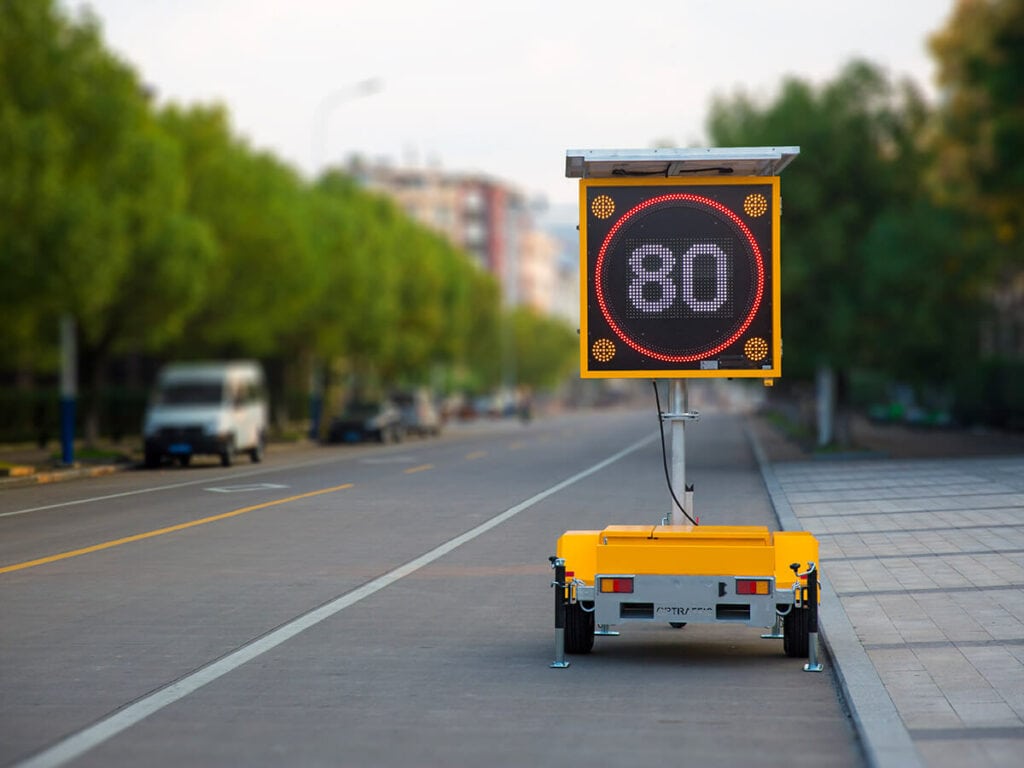
Types of VSLS
VSLS come in various types to accommodate different traffic management needs. Here are two common types:
Fixed: The fixed variable speed limit sign is usually composed of solar panels, a static speed limit board, and an LED display screen, which can be installed on pillars or inserted in the ground, permanently installed at specific locations along roads and highways. They display variable speed limit information to drivers based on different conditions, such as traffic volume, weather conditions, or construction. Fixed VSLS are strategically placed at the entrance of highways, tunnels, or congested areas to provide drivers with real-time speed limits.
Movable: The movable variable speed limit sign consists of solar panels, a static speed limit board, an LED screen, and a trailer. It can be towed by car to anywhere and temporarily deployed in different locations as needed. Mobile VSLS are commonly used in construction areas, work areas, or areas with temporary traffic management needs. Without the permanent infrastructure, traffic management agencies and organizations can dynamically modify speed limits to enhance safety and traffic flow in temporary situations.
Both types of VSLS improve road safety, reduce congestion, and improve traffic management by providing drivers with real-time speed limit information.
Types of OPTRAFFIC Variable Speed Limit Signs:
Folding Frame Radar Speed Sign

Radar & Camera of VSLS
Radar and camera technologies are commonly used in VSLS to efficiently monitor traffic and enforce speed limit rules.
The radar sensor, which is often mounted on the rear of the sign, is used to detect the speed of the vehicle. The radar sensor sends out a signal when a car approaches; the signal then returns back to the sensor after being reflected. Then, the internal system calculates the speed of the car based on the time required for the signal to return. If the driving speed exceeds the limit, the LED lights will flash to remind the driver to slow down. The radar system continuously monitors vehicle speed and provides real-time data to the control system of VSLS.
Camera can be installed above the variable speed limit sign for capturing images or videos. It has two primary purposes:
Traffic flow monitoring: Camera can monitor traffic conditions in real time, enabling traffic management departments to assess traffic congestion and make informed decisions on adjusting speed limits.
Enforcement: Camera can record speeding or other traffic violations, allowing authorities to more conveniently enforce traffic rules.

How Do Variable Speed Limit Signs Work?
VSLS are essential for traffic management during accidents, construction, or congestion. When accidents occur, roads need to be repaired, or traffic congestion occurs, the traffic department can transport VSLS to designated areas by vehicles. Subsequently, deploy VSLS in the appropriate location and ensure the solar panels, LED displays, and power supply can all operate normally. Turn on VSLS and adjust the displayed speed limit based on real-time traffic flow, severity of accidents, or constantly changing road conditions. Once the accident is cleared, maintenance work is completed, or traffic congestion is resolved, VSLS can be transported back to the warehouse or redeployed to other locations as needed.
Benefits of VSLS
Variable Speed Limit Signs (VSLS) offer multiple benefits in various aspects.
Traffic Management
With the use of VSLS, traffic authorities may instantly modify speed limits in response to various traffic conditions, such as congestion, accidents, or adverse weather. By dynamically controlling speeds, VSLS assist in managing traffic flow, reducing congestion, and improving overall road safety.
Flexible & Portable
The digit and pattern of LED screen on VSLS are changeable. Speed limit sign trailer is movable and portable, which can be towed quickly and deployed easily at various locations where traffic management is needed.

Energy-saving
Many VSLS are equipped with solar panels for power supply. Solar panels capture sunlight and convert it into electricity, which is stored in batteries for use at night or in low-light conditions.
Experimental data proves that OPTRAFFIC VSLS can operate uninterruptedly in areas with normal lighting without charging.
Cost-effective
Compared to traditional static speed limit signs, VSLS provide an economical and efficient solution for traffic management. Labor expenses can be decreased by placing VSLS in strategic areas and controlling them remotely. Additionally, solar energy lowers the cost of electricity.
Data Recording and Feedback
VSLS are typically equipped with data recording capabilities, allowing traffic authorities to collect traffic data over time. These data can provide valuable insights, wise decision-making, and future planning for the improvement of traffic models, road conditions, and transportation infrastructure.
Remote Control
Typically, VSLS have remote control function, allowing traffic authorities to monitor and adjust speed limits from a centralized location. The remote control function improves operational efficiency and enables quick response to constantly changing traffic conditions without the need for on-site manual intervention. For instance, the WEB system of the OPTRAFFIC VSLS allows for remote control from PC, smartphone, or controller.
How Do VSLS Optimize Traffic?
VSLS plays a crucial role in traffic management by providing flexible, energy-saving, and cost-effective solutions to optimize traffic flow and enhance road safety. VSLS can reduce crashes on freeways up to 34% for total crashes. 65% for rear-end crashes. 51% for fatal and injury crashes.
Mitigating Congestion: Adjust speed limits based on real-time traffic conditions, such as congestion or accidents. By reducing speed limits, VSLS help prevent traffic bottlenecks and smooth traffic flow, minimizing the likelihood of congestion and improving overall road smoothness.
Increase Safety: Deploying VSLS in hazardous conditions (such as adverse weather or construction areas) and reducing speed limits helps to provide early warning and sufficient reaction time for drivers, thereby reducing the likelihood of collisions.
The Application of VSLS in Various Countries
VSLS are globally recognized as effective equipment for optimizing traffic flow, improving road safety, and improving overall efficiency.
USA: VSLS are widely used on streets in the United States, especially in areas where there is a concern about excessive speed, such as school and work areas in urban and rural. According to experimental data, the overspeed phenomena reduced by 20–25% in regions where it had previously surpassed 74% when VSLS was used.
UK: In the UK, VSLS are frequently implemented on motorways and main roads to regulate traffic speeds in response to changing conditions such as congestion, accidents or bad weather. The signs are operated by Highways England and provide drivers with real-time information to optimize traffic flow.
Australia: VSLS are deployed across Australia, particularly in urban areas and along busy roads, to manage traffic congestion and improve road safety.
Finland: VTT Technical Research Centre of Finland Ltd conducted a comparative study about the effectiveness of speed limit signs. Driving speeds were compared 1 week before installation, after installation (1 week;1 month; 3 months; 5 months), and 1 week after removal. The main results indicated that the speed limit sign reduced the average speed by 0.5-2.9 km/h, equivalent to a 22% reduction in pedestrian mortality risk.
How to Choose a Good Variable Speed Limit Sign
When selecting a variable speed limit sign, several key factors should be considered to ensure optimal performance and suitability:
Material: Due to its long-term outdoor use, VSLS must be durable. Taking VSLS of OPTRAFFIC as an example, the shell is made of hot-dip galvanized aluminum, which is UV-resistant, corrosion-resistant, and waterproof.
Power: Please choose VSLS equipped with reliable power sources, such as solar panels and rechargeable batteries, to ensure continuous operation even in remote areas or during power outages.
LED display: Choose VSLS with high-brightness LED screen to ensure clear and visible speed limit information is provided to the driver under various lighting conditions (including day and night).
System Speed: VSLS generally requires remote control, please confirm the response time. The response speed of OPTRAFFIC VSLS greatly exceeds that of other devices on the market on the market, and in general, commands can be executed within 1 second.
Maintain: Due to the long service life of large equipment such as VSLS, please confirm if your supplier provides quality assurance and maintenance services.
Conclusion
Variable Speed Limit Signs (VSLS) offer a dynamic approach to traffic management and play a vital role in improving traffic efficiency, reducing accidents, and ensuring smoother and safer journeys for road users.
OPTRAFFIC, as a leading factory specializing in the production of traffic equipment, is proud to provide the most advanced traffic management solutions. VSLS of OPTRAFFIC combine advanced technology with reliability to meet the diverse needs of customers.

